
漢德百科全書 | 汉德百科全书
 Important port
Important port


Abidjan [abiˈd͡ʒaːn, frz. abidˈʒɑ̃] ist der größte städtische Ballungsraum der Elfenbeinküste und ein Bezirk in der Region Lagunes am Golf von Guinea. Abidjan war zwischen 1933 und 1983 die Hauptstadt des Landes. Im Jahre 2002 wurden die zehn Stadtkreise zu selbständigen Gemeinden aufgewertet und das Oberbürgermeisteramt abgeschafft. Seither besteht Abidjan aus zehn Städten und drei Unterpräfekturen. Die ehemalige Stadt wuchs rapide von 65.000 Einwohnern im Jahre 1950 zu einer Metropolregion mit 3.692.570 Einwohnern (Stand 1. Januar 2005). Nach Berechnungen von 2012 hat die Stadt selbst bereits über 4,3 Millionen Einwohner, der Ballungsraum knapp 6,8 Millionen.[2]
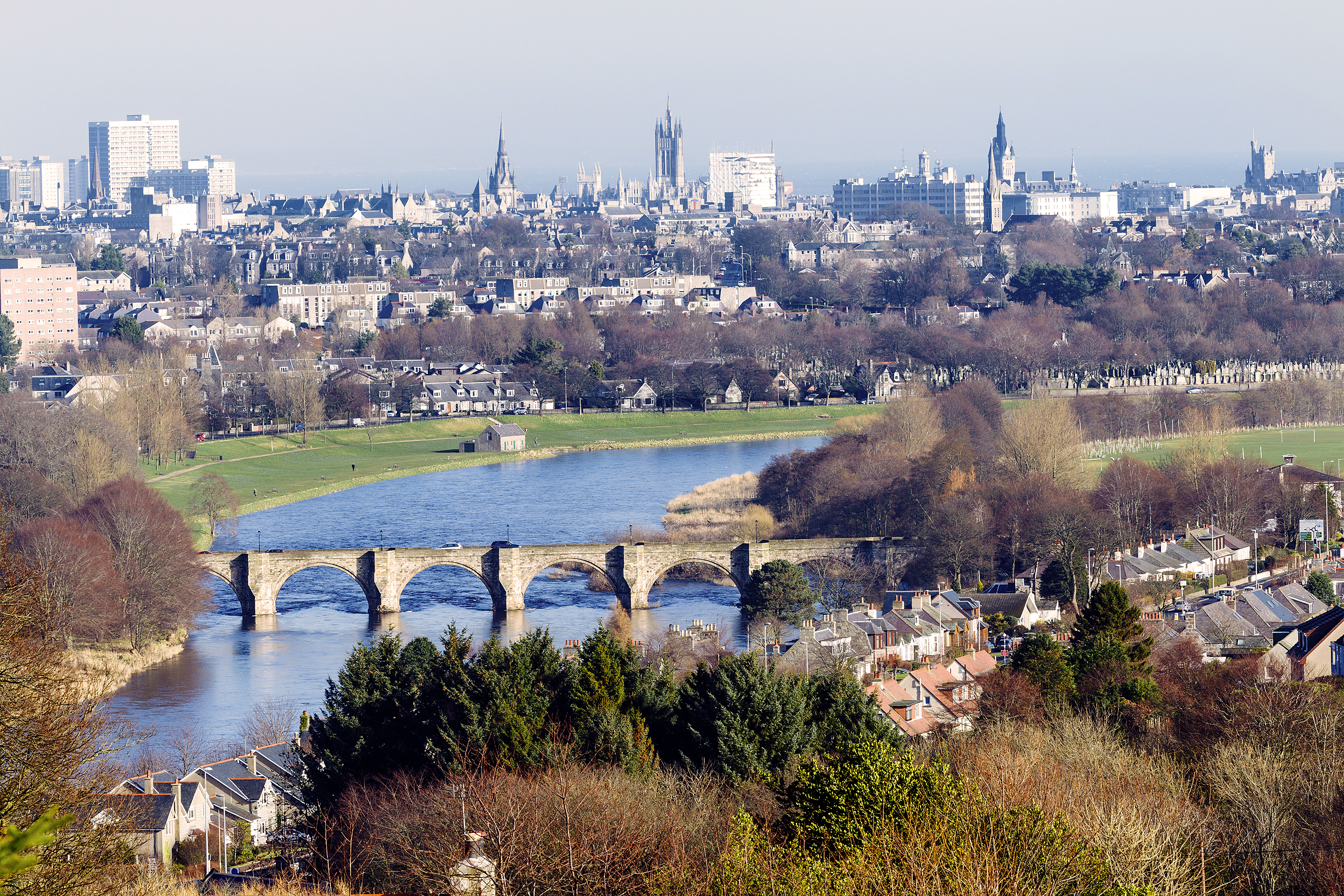
Aberdeen [æbəˈdiːn] (sco.: Aiberdeen [ebərˈdin]; schottisch-gälisch Obar Dheathain[2] [ˈopər ˈʝɛhɪn], „Mündung des Don“[2], amtlich City of Aberdeen) ist eine Stadt im Nordosten von Schottland im Vereinigten Königreich.
Die Stadt ist eine der 32 Council Areas in Schottland und hat zwei Universitäten, von denen die Universität Aberdeen im Jahr 1495 als dritte Universität in Schottland gegründet wurde. Studenten machen rund zehn Prozent der Bevölkerung aus.
Bedeutend ist die Stadt seit dem 12. Jahrhundert. Typisch für das Stadtbild ist der silbergraue Granit aus den ehemals umliegenden Steinbrüchen. Wenn die Sonne scheint, beginnt der Glimmeranteil im Granit zu glitzern, weshalb Aberdeen auch gerne Silver City genannt wird; oder Flower City, denn dank ihrer Blumenanlagen hat die Stadt wiederholt den Wettbewerb Britain in Bloom gewonnen. Seit Anfang der 1970er Jahre die ersten Ölfelder in der Nordsee erschlossen wurden, entwickelte sich die Hafenmetropole schnell zum Hauptversorgungszentrum für die Offshore-Plattformen. Bei guter Sicht konnte man die Erdölbohr-Plattformen vor der Küste mit bloßem Auge sehen.[3]
阿伯丁(英语:Aberdeen ![]() i/æbərˈdiːn/;低地苏格兰语:Aiberdeen listenⓘ;苏格兰盖尔语:Obar Dheathain [ˈopər ˈʝɛhɪn]),英国苏格兰地区的主要城市之一,是苏格兰7个指定市中,人口排行第三的城市(2020年时统计为198,590人[5])。面积186km²。该市位于苏格兰东北部,北面的顿河(River Don)与南面迪伊河(River Dee)的河口之间,是北海海滨的主要海港。[6]
i/æbərˈdiːn/;低地苏格兰语:Aiberdeen listenⓘ;苏格兰盖尔语:Obar Dheathain [ˈopər ˈʝɛhɪn]),英国苏格兰地区的主要城市之一,是苏格兰7个指定市中,人口排行第三的城市(2020年时统计为198,590人[5])。面积186km²。该市位于苏格兰东北部,北面的顿河(River Don)与南面迪伊河(River Dee)的河口之间,是北海海滨的主要海港。[6]
在18世纪中叶到20世纪中叶的200年间,阿伯丁建筑统一采用灰色花岗岩,因而有“花岗岩城”(Granite City)之称,又因为花岗岩中云母的银色光泽而被称为“银城”(Silver City)。[7] 1970年代发现了北海油田之后又获得了“欧洲石油之都”(Oil Capital of Europe)和“欧洲能源之都”(Energy Capital of Europe)等称呼。[8]
阿伯丁地区至少在8,000年前就有人类居住[9],大卫一世统治时期获得皇家自治镇的地位。而到了现代,传统的渔业、造纸业、造船业和纺织业都被石油工业和海运取代。阿伯丁直升机场是世界最繁忙的直升机场之一,[10] 其海港也是苏格兰东北部最大港口。[11]
文化上,1495年阿伯丁大学成立,这是英国最古老的古典大学之一。加上1992年获得大学资格的罗伯特戈登大学,阿伯丁成为了区域内的教育中心。该市每年也负责举办阿伯丁国际青年节。


Abu Dhabi ([ˈabu ˈdaːbi], arabisch أبو ظبي, DMG Abū Ẓabī ‚Vater der Gazelle‘) ist die Hauptstadt des Emirats Abu Dhabi und der Vereinigten Arabischen Emirate (VAE).
Der Kern der Stadt mit ihren über 1,5 Millionen Einwohnern[1] befindet sich auf einer 70 Quadratkilometer großen Insel im Persischen Golf, im Mangrovengürtel. Mit dem Festland verbunden ist sie durch die Mussafa-Brücke, die al-Maqtaa-Brücke und die Sheikh-Zayed-Brücke. Die Hauptinsel ist von einem Kranz künstlich erweiterter oder neu aufgespülter Inseln umgeben, die zurzeit erst zum Teil bebaut sind und das Siedlungsgebiet erweitern.
An der dem offenen Meer zugewandten nordwestlichen Flanke der Insel befindet sich die Corniche, an der seit 2003 weiter Land gewonnen wurde. Am Nordende der Corniche befindet sich ein etwa ein Kilometer breiter und fünf Kilometer langer Streifen, den man aufgrund seiner verdichteten Bebauung als Stadtzentrum betrachten kann.Acht Kilometer westlich liegt die Insel Al-Futaisi.
阿布扎比(阿拉伯语:أبو ظبي,Abū Z̧abī;英语:Abu Dhabi)是阿拉伯联合酋长国之阿布扎比酋长国的首府,也是阿拉伯联合酋长国的首都。阿布扎比位于阿拉伯联合酋长国的中西边海岸,位于波斯湾的一个T字形岛屿上。阿布扎比于2006年人口大约为180万,而80%人口持有外国国籍。它是世界上外派员工生活费用最昂贵的城市之一,在阿联酋内仅次于迪拜[5]。 阿布扎比的殖民历史最早可以追溯至公元前3千年,当时在当地生活的都是游牧民族,以畜牧及捕渔为生。在阿布扎比附近艾因和哈菲特山周围也发现了一些史前人类遗址。
アブダビ市(アラビア語: أبو ظبي)は、アブダビ首長国の首都であると同時に、アラブ首長国連邦の首都でもある。
アブダビを首都として定めている現行の連邦憲法は、制定時は暫定憲法という位置付けだったため、アブダビも形式的には暫定首都という地位にあった。1996年にその暫定憲法が正式に連邦の恒久的な憲法として制定されたため、それに伴いアブダビも名実共に連邦の正式な首都としての地位を得た。
ドバイに次ぎ、同国第2の人口を有する。
Abu Dhabi (UK: /ˈæbuːˈdɑːbi/, US: /ˈɑːbuː/ ; Arabic: أَبُو ظَبْيٍ Abū Ẓabī Arabic pronunciation: [ɐˈbuˈðˤɑbi])[5] is the capital and the second-most populous city of the United Arab Emirates (after Dubai). The city of Abu Dhabi is located on an island in the Persian Gulf, off the Central West Coast. Most of the city and the Emirate reside on the mainland connected to the rest of the country. As of 2020, Abu Dhabi's urban area had an estimated population of 1.48 million,[6] out of 2.9 million in the emirate of Abu Dhabi, as of 2016.[7] Abu Dhabi Investment Authority, the world's 3rd largest sovereign wealth fund in 2020 is headquartered in the city,[8] while Abu Dhabi itself has over a trillion US dollars worth of assets under management in a combination of various sovereign wealth funds headquartered there.[9]
Abu Dhabi houses local and federal government offices and is the home of the United Arab Emirates Government and the Supreme Petroleum Council. The city is home to the President of the UAE, who is a member of the Al Nahyan family. Abu Dhabi's rapid development and urbanization, coupled with the massive oil and gas reserves and production and relatively high average income, have transformed it into a large, developed metropolis. It is the country's center of politics and industry, and a major culture and commerce center. Abu Dhabi accounts for about two-thirds of the roughly $400 billion UAE economy.[10]
Abou Dabi, parfois orthographié Abu Dhabi, Abou Dhabi ou Aboû DabîNote 1, en arabe أبو ظبي, ʼAbū Ẓaby, littéralement « Père de la gazelle »3, est la capitale de l'émirat d'Abou Dabi et des Émirats arabes unis4.
Bien que l'on trouve des traces de civilisation plusieurs millénaires avant notre ère, la zone n'a été habitée en permanence qu'à partir du XVIIIe siècle. Mais c'est au XXe siècle que la ville a connu une croissance importante, en grande partie grâce aux revenus du pétrole5.
Aujourd'hui, Abou Dabi qui compte près de 1,483 million habitants, est la troisième ville des Émirats arabes unis après Charjah et Dubaï. Elle est le centre politique et industriel de la fédération, et un centre culturel et commercial important dans le golfe Persique, du fait de sa position de capitale.
Abu Dhabi, o più correttamente 'Abū Ẓabiyy (in arabo: أبو ظبي), è la capitale degli Emirati Arabi Uniti e capitale dell'omonimo emirato.[1] Abu Dhabi si trova su un'isola a forma di T che si protende nel Golfo Persico dalla costa centro-occidentale. Nel 2014, la città vera e propria contava una popolazione di 1,5 milioni di persone.[2]
La città fu fondata nel 1791 dalla tribù beduina dei Banū Yās, che avevano occupato la regione, lasciando il Najd poiché in contrasto con i wahhabiti dell'Arabia.
Abu Dhabi ospita uffici del governo federale, è la sede del governo degli Emirati Arabi Uniti, sede della famiglia degli Emiri di Abu Dhabi e del Presidente degli Emirati Arabi Uniti, che proviene da questa famiglia. Il suo rapido sviluppo e l'urbanizzazione, accoppiata con il relativamente alto reddito medio della sua popolazione, ha trasformato la città in una grande e avanzata metropoli. Oggi la città è il centro del paese nelle attività politiche e industriali, oltre ad essere un importante centro culturale e commerciale. Abu Dhabi rappresenta circa i due terzi dell'economia degli Emirati Arabi Uniti con circa 400 miliardi di dollari statunitensi.[3]
Abu Dhabi è la quarta città più cara per i lavoratori espatriati nella regione, nel 2014 è stata la 68ª città più costosa al mondo.
Oltrepassando oltre 300 città, tra cui Tokyo, Basilea, Monaco e Vienna, la capitale degli Emirati Arabi Uniti è tornata in cima alla lista come la città più sicura al mondo. L'indice di sicurezza dell'emirato è cresciuto da 86,46 punti nel primo semestre del 2017 a 88,26 punti nei primi sei mesi del 2018[4].
Abu Dabi1 (en árabe, أبوظبي ʼAbū Ẓabī, literalmente 'Padre de una gacela')2 es la capital y segunda ciudad más poblada de los Emiratos Árabes Unidos, así como del emirato homónimo. Abu Dabi se encuentra en una isla en forma de T al sureste del golfo Pérsico. El emirato en sí cubre una superficie de 67 340 km² y tenía una población de 860 000 habitantes en 2007.3
Abu Dabi aloja importantes oficinas del gobierno federal y es la sede del Gobierno de los Emiratos Árabes Unidos, así como sede de la familia real emiratí. Abu Dabi ha crecido hasta convertirse en una metrópolis cosmopolita. Su rápido desarrollo y urbanización, junto con la relativamente elevada renta media de su población, han impulsado una transformación de Abu Dabi en la última década del siglo XX y primera del XXI. A comienzos del siglo XXI, la ciudad es el centro de la vida política del país, de las actividades industriales y de gran tradición cultural. Además, es el centro comercial debido a su posición como capital. Abu Dabi genera por sí sola el 15% del PIB de los Emiratos Árabes Unidos.45 La capital emiratí es sede de importantes instituciones financieras, como el Abu Dhabi Securities Exchange, el Banco Central de los Emiratos Árabes Unidos, y la sede corporativa de muchas empresas nacionales y multinacionales. Uno de los mayores productores mundiales de petróleo, Abu Dabi ha tratado de diversificar su economía en los últimos años a través de inversiones en los servicios financieros y turismo. Abu Dabi es la tercera ciudad más cara en la región y la 26.ª ciudad más cara del mundo.6
Aunque según las normas de transcripción del árabe debería escribirse en español Abu Zabi,[cita requerida] la Academia de la Lengua recomienda la forma Abu Dabi.[cita requerida] El gentilicio recomendado es abudabí.
А́бу́-Да́би[3][4][5] (араб. أَبو ظَبِي [ɐˈbuˈðˤɑbi][6]) — столица Объединённых Арабских Эмиратов и эмирата Абу-Даби. Политический, промышленный, торговый и культурный центр страны, его вклад в ВВП ОАЭ превышает 56 % (2008). Население города 1 483 000 жителей[1] (2020). Ранее город назывался А́бу-За́би[7][8].
В Абу-Даби находятся местные и федеральные правительственные учреждения, а также резиденция правительства Объединённых Арабских Эмиратов и Высшего нефтяного совета. В городе проживает президент ОАЭ, который является членом семьи Аль Нахайян. Быстрое развитие и урбанизация Абу-Даби в сочетании с огромными запасами и добычей нефти и газа, а также относительно высоким средним уровнем дохода его населения превратили город в крупный и развитый мегаполис. Сегодня город является центром политической и промышленной деятельности страны, а также крупным культурным и торговым центром, из-за его положения в качестве столицы. На Абу-Даби приходится около двух третей экономики ОАЭ, общей стоимостью около 400 миллиардов долларов



Algier ([ˈalʒiːɐ̯]; arabisch مدينة الجزائر, Madīnat al-Dschazā'ir, algerisches Arabisch und Berber: دزاير, Dzayer [dzæˈjer], französisch Alger) ist die Hauptstadt Algeriens. Sie ist die größte Stadt und Namensgeber des Landes, Industriestadt, Verkehrsknotenpunkt und Kulturzentrum mit Universitäten, zahlreichen Instituten, Galerien und Museen.
Im städtischen Siedlungsgebiet der Kernstadt (hohe Bebauungsdichte und geschlossene Ortsform) leben 2,2 Millionen Menschen.[1] Die Provinz Algier mit insgesamt 57 Gemeinden hat 3,5 Millionen Einwohner (2008).[2] In den letzten Jahrzehnten hat sich ein größerer Vorortgürtel um die Stadt gebildet. In der Metropolregion, die weit über die Grenzen der Provinz hinausreicht, leben 6,3 Millionen Menschen (2008).[3] Algier heißt neben der Provinz eigentlich nur die Gemeinde (etwa 150.000 Einwohner), die das Stadtzentrum umfasst.
Das Bild der älteren Viertel von Algier wird von der Kasbah, einer Burg aus dem 16. Jahrhundert, der Großen Moschee aus dem 11. Jahrhundert und der 1660 errichteten Moschee sowie von Bauten aus der französischen Kolonialzeit (1830–1962) geprägt. 1992 wurde die Altstadt (ebenfalls Kasbah genannt) von der UNESCO zum Weltkulturerbe erklärt.[4]
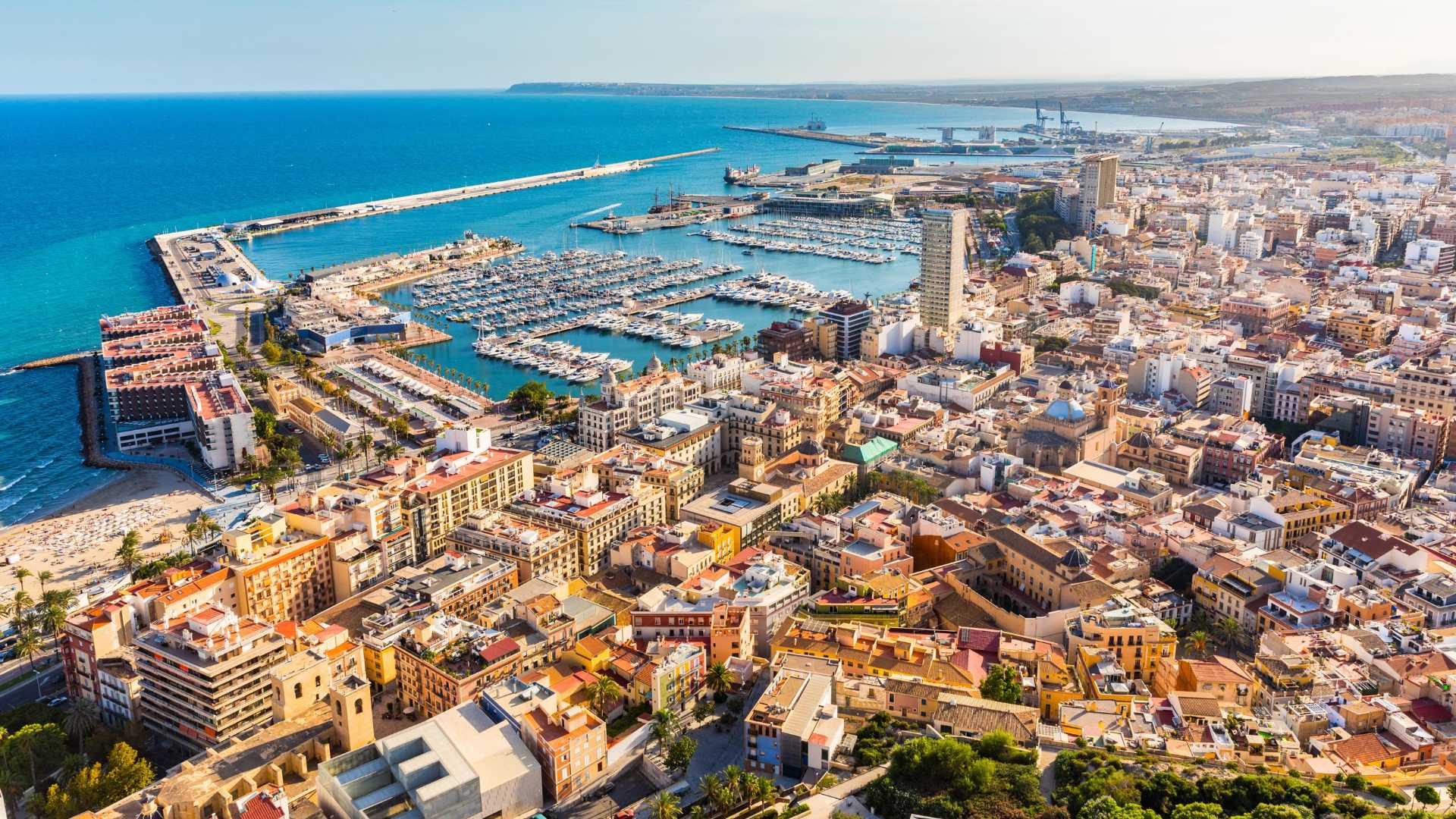
Alicante (spanisch) bzw. Alacant (valencianisch) ist eine spanische Hafenstadt an der Costa Blanca mit 338.577 Einwohnern (Stand: 1. Januar 2022). Alicante ist die Hauptstadt der gleichnamigen Provinz und nach Valencia die wichtigste Stadt der autonomen Valencianischen Gemeinschaft.
Ihre Wirtschaft basiert hauptsächlich auf Tourismus und Weinproduktion. Neben Wein werden auch Olivenöl und Obst exportiert. Daneben gibt es Leichtindustrien wie die Lebensmittelverarbeitung sowie eine Leder-, Textil- und Steinzeugindustrie. Außerdem ist Alicante seit 1994 der Sitz des Amts der Europäischen Union für Geistiges Eigentum.
阿利坎特(西班牙语:Alicante;巴伦西亚语:Alacant)是西班牙巴伦西亚自治区,阿利坎特省的首府,在地中海旁,是重要的海港,有西班牙最古老的铁路连接。
它亦是欧盟商标局总部所在地。

 Eurovision Song Contest,ESC
Eurovision Song Contest,ESC
 UEFA European Championship 2020
UEFA European Championship 2020

 International cities
International cities
 *European Capital of Culture
*European Capital of Culture
 Netherlands
Netherlands
 Olympic Summer Games
Olympic Summer Games
 1928 Summer Olympics
1928 Summer Olympics

 World Heritage
World Heritage

 Important port
Important port
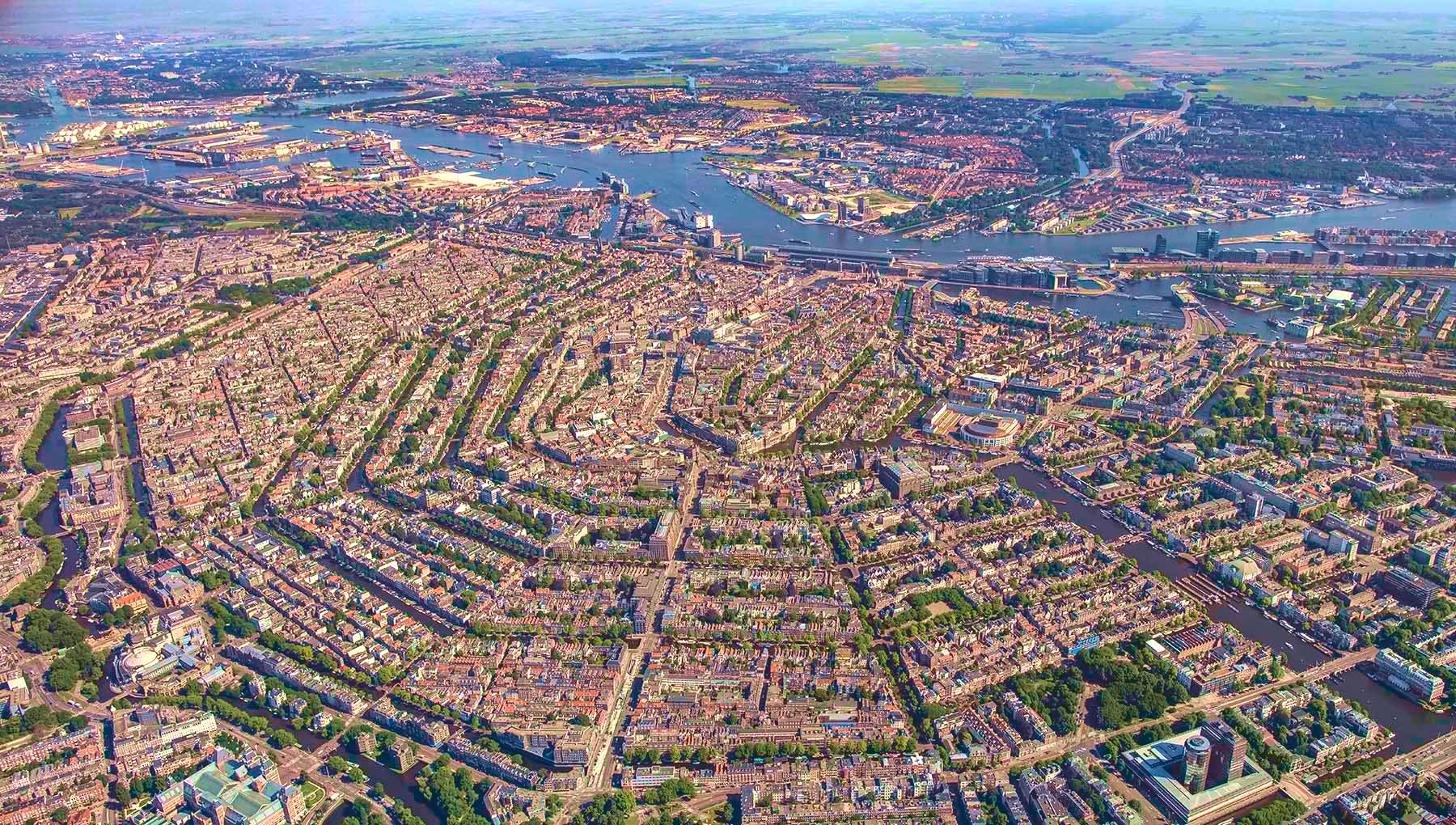
Amsterdam (niederländisch  Amsterdam?/i) ist die Hauptstadt und einwohnerstärkste Stadt des Königreichs der Niederlande. Die Gemeinde Amsterdam hat 851.223 Einwohner (Stand: 31. August 2017)[2] und als Agglomeration Groot-Amsterdam 1.362.270 Millionen (Stand: 28. Februar 2018).[3] Im Großraum Amsterdam, der den nördlichen Teil des niederländischen Verdichtungsraumes Randstad ausmacht, leben etwa 2,4 Millionen Menschen (2012).[4] Auch wenn sich der Regierungssitz des Landes sowie die Königsresidenz im 60 Kilometer entfernten Den Haag befinden, ist Amsterdam seit 1983 gemäß niederländischer Verfassung die Hauptstadt der Niederlande.[5]
Amsterdam?/i) ist die Hauptstadt und einwohnerstärkste Stadt des Königreichs der Niederlande. Die Gemeinde Amsterdam hat 851.223 Einwohner (Stand: 31. August 2017)[2] und als Agglomeration Groot-Amsterdam 1.362.270 Millionen (Stand: 28. Februar 2018).[3] Im Großraum Amsterdam, der den nördlichen Teil des niederländischen Verdichtungsraumes Randstad ausmacht, leben etwa 2,4 Millionen Menschen (2012).[4] Auch wenn sich der Regierungssitz des Landes sowie die Königsresidenz im 60 Kilometer entfernten Den Haag befinden, ist Amsterdam seit 1983 gemäß niederländischer Verfassung die Hauptstadt der Niederlande.[5]
Amsterdam liegt in der niederländischen Provinz Nordholland, wo Amstel und IJ direkt hintereinander in das IJsselmeer münden. Der Hafen der Stadt ist durch den Nordseekanal mit der Nordsee verbunden. Amsterdam ist für die vielen Grachten weltberühmt.
阿姆斯特丹(荷兰语:Amsterdam[ɑmstərˈdɑm] ),是荷兰首都及最大城市,位于该国西部省份北荷兰省。根据2008年1月的统计数据,这座城市人口达747,290人;而该城市所处的兰斯台德都市圈,大约有670万人口,是欧洲第6大都市圈。
其名称源于Amstel dam,这表明了该城市的起源:一个位于阿姆斯特尔河上的水坝,即今水坝广场址。12世纪晚期一个小渔村建于此,而后由于贸易的迅猛发展,阿姆斯特丹在荷兰黄金时代一跃而成为世界上最重要的港口。在那个时代,该城是金融和钻石的中心。 19和20世纪,该城扩展,许多新的街坊与近郊住宅区形成。
阿姆斯特丹是荷兰的金融和文化首都。许多荷兰大型机构的总部都设于此,其中包括飞利浦和ING等7家世界500强企业的总部。作为泛欧交易所的一部分,阿姆斯特丹证券交易所坐落于城市中心。阿姆斯特丹有很多旅游景点,包括历史悠久的运河网、荷兰国家博物馆、凡·高博物馆、安妮之家、红灯区以及许多大麻咖啡馆。每年有大约420万游客来此观光。
作为当前荷兰第一大城市,阿姆斯特丹历经了从渔村到国际化大都市的发展过程,经历了辉煌与破坏,以及世界大战的洗礼,从一定程度上讲,她的历史也是荷兰历史的一个缩影。
アムステルダム(オランダ語: Amsterdam [ˌʔɑmstərˈdɑm] (![]() 音声ファイル))は、オランダの北ホラント州の基礎自治体(ヘメーンテ)であり、オランダ最大の都市である。人口820,654人(2012年)、都市圏人口は2,289,762人にのぼる。商業や観光が盛んなヨーロッパ屈指の世界都市である[6]。オランダ語での発音は片仮名で表記すると「アムスタダム」に近い。地名は「アムステル川のダム(堤防)」の意(「ダム広場」の項を参照)。
音声ファイル))は、オランダの北ホラント州の基礎自治体(ヘメーンテ)であり、オランダ最大の都市である。人口820,654人(2012年)、都市圏人口は2,289,762人にのぼる。商業や観光が盛んなヨーロッパ屈指の世界都市である[6]。オランダ語での発音は片仮名で表記すると「アムスタダム」に近い。地名は「アムステル川のダム(堤防)」の意(「ダム広場」の項を参照)。
憲法に規定されたオランダの首都だが、国会、中央官庁、王宮、各国の大使館など首都機能のほとんどはデン・ハーグにある[7]。
元々は小さな漁村だったが、13世紀にアムステル川の河口にダムを築き、町が築かれた。16世紀には海運貿易の港町として、ヨーロッパ屈指の都市へと発展した。現在のアムステルダムは、アムステルダム中央駅を中心に市内に網の目状に広がる運河や、その運河に沿って並ぶ無総督時代の豪商の邸宅、自転車、飾り窓の女性たち、アンネ・フランクの家などで広く知られる。
Amsterdam (/ˈæmstərdæm/, UK also /ˌæmstərˈdæm/;[9][10] Dutch: [ɑmstərˈdɑm] ( listen)) is the capital and most populous municipality of the Netherlands. Its status as the capital is mandated by the Constitution of the Netherlands,[11] although it is not the seat of the government, which is The Hague.[12] Amsterdam has a population of 851,373 within the city proper, 1,351,587 in the urban area,[13] and 2,410,960 in the Amsterdam metropolitan area.[8] The city is located in the province of North Holland in the west of the country but is not its capital, which is Haarlem. The metropolitan area comprises much of the northern part of the Randstad, one of the larger conurbations in Europe, with a population of approximately 8 million.[14]
listen)) is the capital and most populous municipality of the Netherlands. Its status as the capital is mandated by the Constitution of the Netherlands,[11] although it is not the seat of the government, which is The Hague.[12] Amsterdam has a population of 851,373 within the city proper, 1,351,587 in the urban area,[13] and 2,410,960 in the Amsterdam metropolitan area.[8] The city is located in the province of North Holland in the west of the country but is not its capital, which is Haarlem. The metropolitan area comprises much of the northern part of the Randstad, one of the larger conurbations in Europe, with a population of approximately 8 million.[14]
Amsterdam's name derives from Amstelredamme,[15] indicative of the city's origin around a dam in the river Amstel. Originating as a small fishing village in the late 12th century, Amsterdam became one of the most important ports in the world during the Dutch Golden Age (17th century), a result of its innovative developments in trade. During that time, the city was the leading centre for finance and diamonds.[16] In the 19th and 20th centuries the city expanded, and many new neighbourhoods and suburbs were planned and built. The 17th-century canals of Amsterdam and the 19–20th century Defence Line of Amsterdam are on the UNESCO World Heritage List. Since the annexation of the municipality of Sloten in 1921 by the municipality of Amsterdam, the oldest historic part of the city lies in Sloten (9th century).
As the commercial capital of the Netherlands and one of the top financial centres in Europe, Amsterdam is considered an alpha world city by the Globalization and World Cities (GaWC) study group. The city is also the cultural capital of the Netherlands.[17] Many large Dutch institutions have their headquarters there, and seven of the world's 500 largest companies, including Philips, AkzoNobel, TomTom and ING, are based in the city.[18] Also, many leading technology companies have their European headquarters in Amsterdam, such as Uber, Netflix and Tesla.[19] In 2012, Amsterdam was ranked the second best city to live in by the Economist Intelligence Unit (EIU)[20] and 12th globally on quality of living for environment and infrastructure by Mercer.[21] The city was ranked 3rd in innovation by Australian innovation agency 2thinknow in their Innovation Cities Index 2009.[22] The Port of Amsterdam to this day remains the second in the country, and the fifth largest seaport in Europe.[23] Famous Amsterdam residents include the diarist Anne Frank, artists Rembrandt van Rijn and Vincent van Gogh, and philosopher Baruch Spinoza.
The Amsterdam Stock Exchange, the oldest stock exchange in the world, is located in the city centre. Amsterdam's main attractions, include its historic canals, the Rijksmuseum, the Van Gogh Museum, the Stedelijk Museum, Hermitage Amsterdam, the Anne Frank House, the Scheepvaartmuseum, the Amsterdam Museum, the Heineken Experience, the Royal Palace of Amsterdam, Natura Artis Magistra, Hortus Botanicus Amsterdam, NEMO Science Museum, its red-light district and its many cannabis coffee shops draw more than 5 million international visitors annually.[24] The city is also well known for its nightlife and festival activity; several of its nightclubs (Melkweg, Paradiso) are among the world's most famous. It is also one of the world's most multicultural cities, with at least 177 nationalities represented.[25]
Amsterdam (Écouter) est la commune la plus peuplée et la capitale du royaume des Pays-Bas, bien que le gouvernement ainsi que la plupart des institutions du pays siègent à La Haye. Sur la base des chiffres de l'année 2017, la commune d'Amsterdam compte plus de 850 000 habitants appelés Amstellodamois, au cœur de la région d'Amsterdam qui regroupe environ 1 350 000 habitants. L'aire urbaine, qui rassemble plus de 2 400 000 résidents3,4 fait elle-même partie d'une conurbation appelée Randstad Holland qui compte 7 100 000 habitants. La ville est située en Hollande-Septentrionale, mais n'est cependant pas la capitale de la province, cette dernière étant Haarlem, située à 19 kilomètres à l'ouest d'Amsterdam.
Le nom de la commune vient de l'ancien nom néerlandais Amstelredamme évoquant les origines de la ville : la digue (Dam) sur l'Amstel. Petit village de pêcheurs au XIIe siècle, la ville connaît une très forte croissance au Moyen Âge au point de devenir l'un des principaux ports du monde durant le Siècle d'or néerlandais. Le quartier De Wallen est la partie la plus ancienne de la ville, qui se développe autour d'un réseau concentrique de canaux semi-circulaires reliés par des canaux perpendiculaires, formant une « toile d'araignée ». Au centre de la vieille ville se trouve, sur la place du Dam, le palais royal d'Amsterdam, construit au XVIIe siècle, symbole de l'importance de la ville. Guillaume Ier en fait sa résidence en 1815. Depuis juillet 2010, le quartier du Grachtengordel, délimité par le Herengracht, Keizersgracht et Prinsengracht, figure sur la liste du patrimoine mondial de l'UNESCO. Dans cette zone que se trouve le renommé béguinage d'Amsterdam, cour arborée et bordée d'habitations anciennes — la plus vieille datant de 1528 environ — abritant en son sein une chapelle anglicane.
Amsterdam est l'un des centres économiques majeurs des Pays-Bas et l'un des principaux centres financiers d'Europe. Les sièges sociaux de plusieurs firmes multinationales (Philips, AkzoNobel, ING et TomTom notamment) sont situés dans la ville et d'autres ont leurs bureaux européens basés à Amsterdam (principalement Netflix, Uber et Tesla). La ville est également la première destination touristique et culturelle néerlandaise, notamment du fait de la renommée ses principaux musées concentrés autour du Museumplein : le musée d'État, la fondation d'art moderne Stedelijk Museum et le Van Gogh Museum figurent parmi les plus visités au monde. D'autres lieux culturels d'importance sont le musée scientifique NEMO, l'Institut royal des Tropiques, le musée d'art Hermitage, l'institut du cinéma EYE, le musée maritime néerlandais et la Maison Anne Frank.
Divers classements placent Amsterdam parmi les métropoles mondiales offrant le meilleur confort de vie5, le magazine américain Forbes la positionnant à la première place en 20166. Selon l'Economist Intelligence Unit, elle est également la deuxième ville la plus sûre d'Europe après Stockholm7. La majorité des déplacements en ville s'effectue grâce aux quinze lignes de tramway, aux cinq lignes de métro, à pied ou à vélo. La ville est réputée pour ses événements festivaliers (particulièrement l'Amsterdam Music Festival, Sensation, In Qontrol et Uitmarkt), ses discothèques (spécifiquement Paradiso et Melkweg) et ses salles de concert (notamment le Ziggo Dome, Concertgebouw, Heineken Music Hall et Stadsschouwburg). Amsterdam est aussi connue pour son quartier rouge, ainsi que pour ses nombreux coffee shops possédant une licence leur permettant de commercialiser le cannabis, reflétant le progressisme politique des Pays-Bas8.
Amsterdam (pron. /ˈamsterdam/[1]; in olandese: /ˌɑmstər'dɑm/, pronuncia[?·info]) è la capitale e la maggiore città dei Paesi Bassi, nella provincia dell'Olanda Settentrionale. La municipalità di Amsterdam ha 851.573 residenti (al 2017) di oltre 170 nazionalità, mentre la popolazione che risiede nell'area metropolitana è di circa 2.289.762 persone. L'area al centro della città circondata dai canali del XII secolo è dal 2010 Patrimonio dell'umanità.
Amsterdam possiede uno dei maggiori centri rinascimentali di tutta l'Europa. Numerose costruzioni che risalgono al periodo tra il XVI e XVII secolo, conosciuto anche come Secolo d'oro, sono ora considerate monumenti storici e sono collocate intorno ad una serie di canali poligonali concentrici. Questi cingono il vecchio porto che un tempo era affacciato sullo Zuiderzee, oggi un lago separato dal resto del mare e noto con il nome di IJsselmeer. La città è famosa per ospitare il Rijksmuseum (museo statale), il museo Van Gogh, il Concertgebouw, il Rembrandthuis, la casa di Anna Frank e un enorme numero di biciclette.
Amsterdam è anche famosa per il suo quartiere a luci rosse, il De Wallen, e i suoi numerosi coffee-shop autorizzati alla vendita di marijuana e di derivati della cannabis.
Il motto ufficiale della città è "Heldhaftig, Vastberaden, Barmhartig" ("valorosa, decisa, misericordiosa"). Le tre croci di Sant'Andrea sulla bandiera sono associate a queste tre parole, benché siano entrate in uso prima del motto.
Ámsterdam5 o Amsterdam, según la pronunciación etimológica ( Amsterdam (?·i) [ɑmstər'dɑm]), es la capital oficial de los Países Bajos. La ciudad está situada entre la bahía del IJ, al norte, y a las orillas del río Amstel, al sureste. Fue fundada en el siglo XII como un pequeño pueblo pesquero. Sin embargo, en la actualidad es la ciudad más grande del país y un gran centro financiero y cultural de proyección internacional.
Amsterdam (?·i) [ɑmstər'dɑm]), es la capital oficial de los Países Bajos. La ciudad está situada entre la bahía del IJ, al norte, y a las orillas del río Amstel, al sureste. Fue fundada en el siglo XII como un pequeño pueblo pesquero. Sin embargo, en la actualidad es la ciudad más grande del país y un gran centro financiero y cultural de proyección internacional.
Tiene una población de unos 810 000 habitantes y en su área metropolitana residen aproximadamente 1,5 millones. Cabe destacar que Ámsterdam forma parte de la gran conurbación neerlandesa llamada Randstad (junto con las ciudades de La Haya, Róterdam y Utrecht), que cuenta con más de 6,5 millones de habitantes. Este núcleo es una de las conurbaciones más grandes de Europa.
El centro histórico de la ciudad fue construido en gran parte en el siglo XVII y es hoy en día uno de los centros históricos más grandes de Europa. En aquella época se construyeron una serie de canales semicirculares alrededor del casco antiguo ya existente de la ciudad. Después se edificaron las nuevas calles que ahora habían sido creadas con casas y almacenes en un estilo típico neerlandés que es una de las imágenes más famosas de Ámsterdam y del país. Al igual que otras ciudades de Europa septentrional con abundancia de agua, como Brujas, Hamburgo y Estocolmo, es conocida coloquialmente como la «Venecia del norte».
Aunque durante casi toda su historia (excepto entre 1808–1810) ha sido la capital oficial de los Países Bajos, nunca ha sido la sede de la justicia, el gobierno o el parlamento neerlandés, ya que todos estos órganos se encuentran en la ciudad de La Haya, que por tanto es la principal ciudad del país con respecto a política y justicia. Ámsterdam tampoco es la capital de la provincia de Holanda Septentrional, que siempre ha sido Haarlem.
Амстерда́м (нидерл. Amsterdam [ˌɑmstərˈdɑm]) — столица и крупнейший город Нидерландов. Является столицей королевства с 1814 года. Расположен в провинции Северная Голландия на западе страны в устье рек Амстел и Эй. Амстердам соединён Нордзе-каналом с Северным морем.
По состоянию на 1 января 2012 года население муниципалитета Амстердам составляет 801 847 человек[1], вместе с пригородами (городской округ) — 2,3 млн жителей. Амстердам является частью агломерации Рандстад, которая является 6-й по величине в Европе.
Название города произошло от двух слов: «Амстел» — название реки и «дам» — «дамба». В XII веке это была небольшая рыбачья деревня, но во времена Золотого века Нидерландов Амстердам стал одним из наиболее значимых портов мира и крупным торговым центром.
Город является местом концентрации различных культур — в апреле 2009 года здесь проживали представители 177 национальностей.
Амстердам также является финансовой и культурной столицей Нидерландов. Здесь расположились штаб-квартиры 7 из 500 наиболее крупных мировых компаний, например, Philips и ING Groep. Также в центре города расположена старейшая в мире фондовая биржа.
В Амстердаме расположен главный офис Гринпис.
Множество достопримечательностей: Рейксмюзеум, Музей Винсента Ван Гога, Городской музей, Эрмитаж на Амстеле, квартал красных фонарей (Де Валлен) — ежегодно привлекает в город около 4,2 миллиона туристов.


埃斯奎莫尔特港是加拿大不列颠哥伦比亚省温哥华岛南端大维多利亚地区的一个天然海港。埃斯奎莫尔特港的入口从南面的胡安-德富卡海峡(Strait of Juan de Fuca)通过一条名为皇家大道(Royal Roads)的狭窄海峡。埃斯奎莫尔特港位于该地区另一个主要港口维多利亚港以东。埃斯奎马尔特港是加拿大皇家海军太平洋海上部队(Maritime Forces Pacific)的驻地,该部队驻扎在埃斯奎马尔特海军基地(CFB Esquimalt)。
Esquimalt Harbour ist ein Naturhafen im Großraum Victoria an der Südspitze von Vancouver Island in British Columbia, Kanada. Die Einfahrt in den Esquimalt Harbour erfolgt von Süden aus der Straße von Juan de Fuca durch einen schmalen Kanal, der als Royal Roads bekannt ist. Esquimalt Harbour liegt östlich von Victoria Harbour, einem weiteren wichtigen Hafen der Region. In Esquimalt Harbour sind die Maritime Forces Pacific der Royal Canadian Navy beheimatet, die in der CFB Esquimalt stationiert sind.
 Sport
Sport
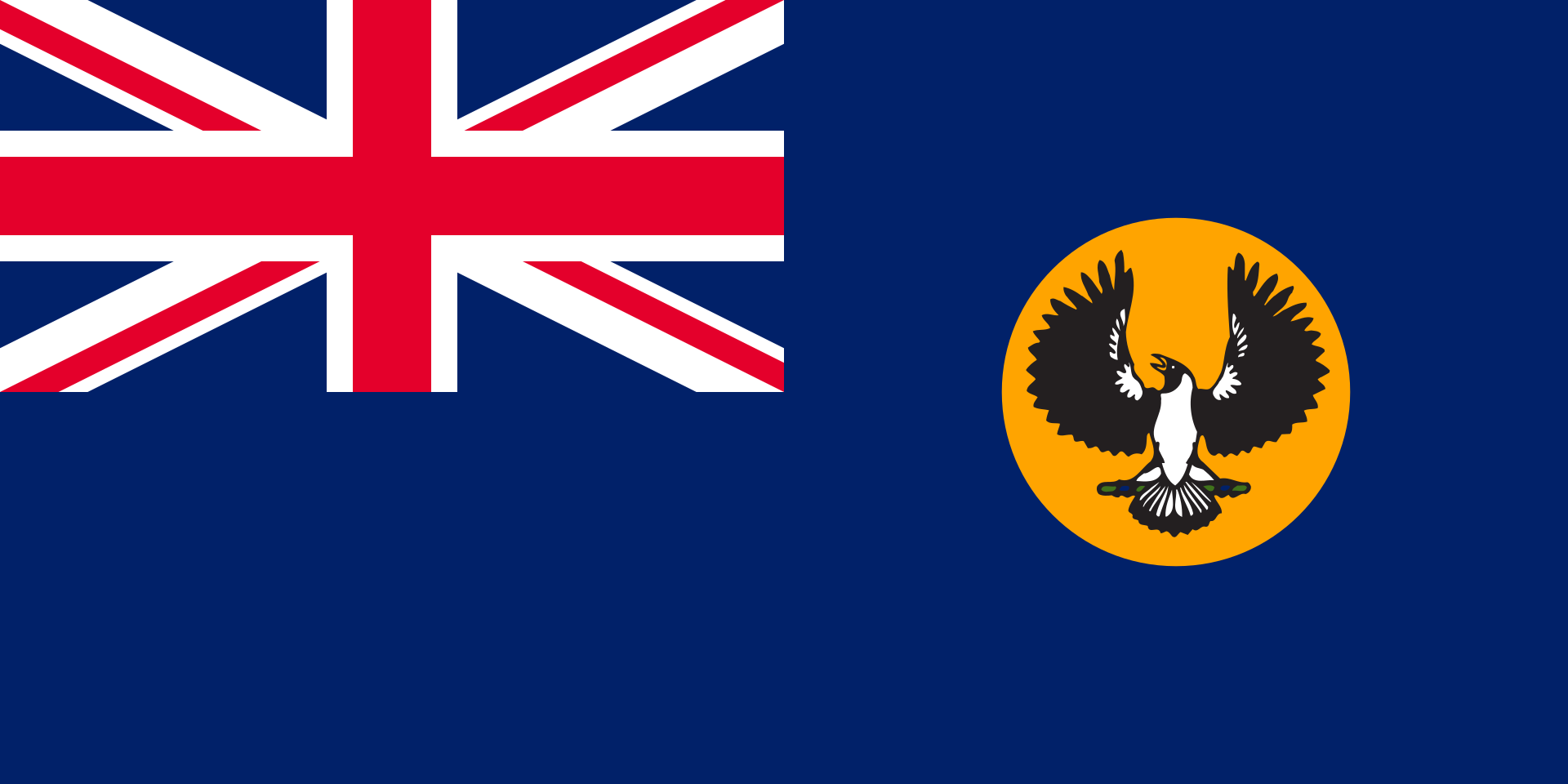 South Australia-SA
South Australia-SA
 Arkhangelsk Oblast
Arkhangelsk Oblast
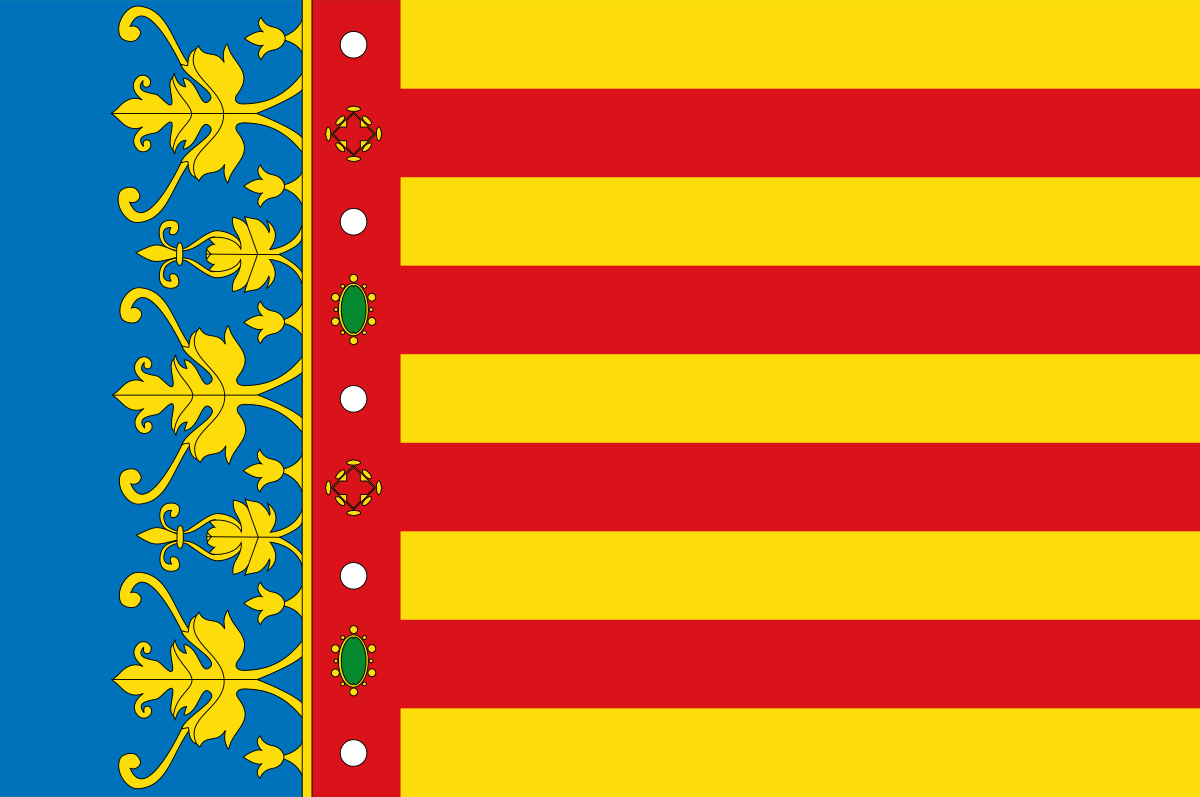 Valencian Community
Valencian Community
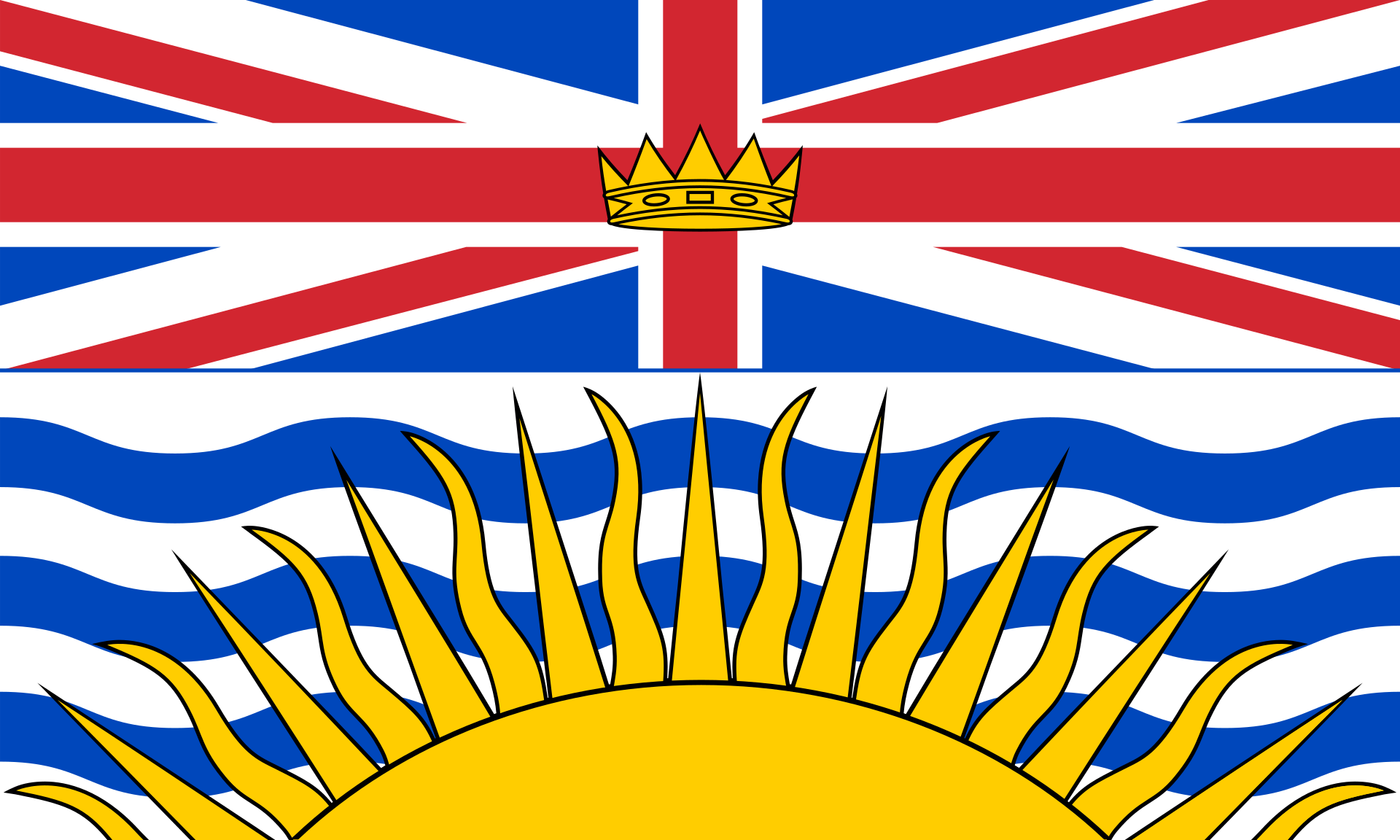 British Columbia-BC
British Columbia-BC